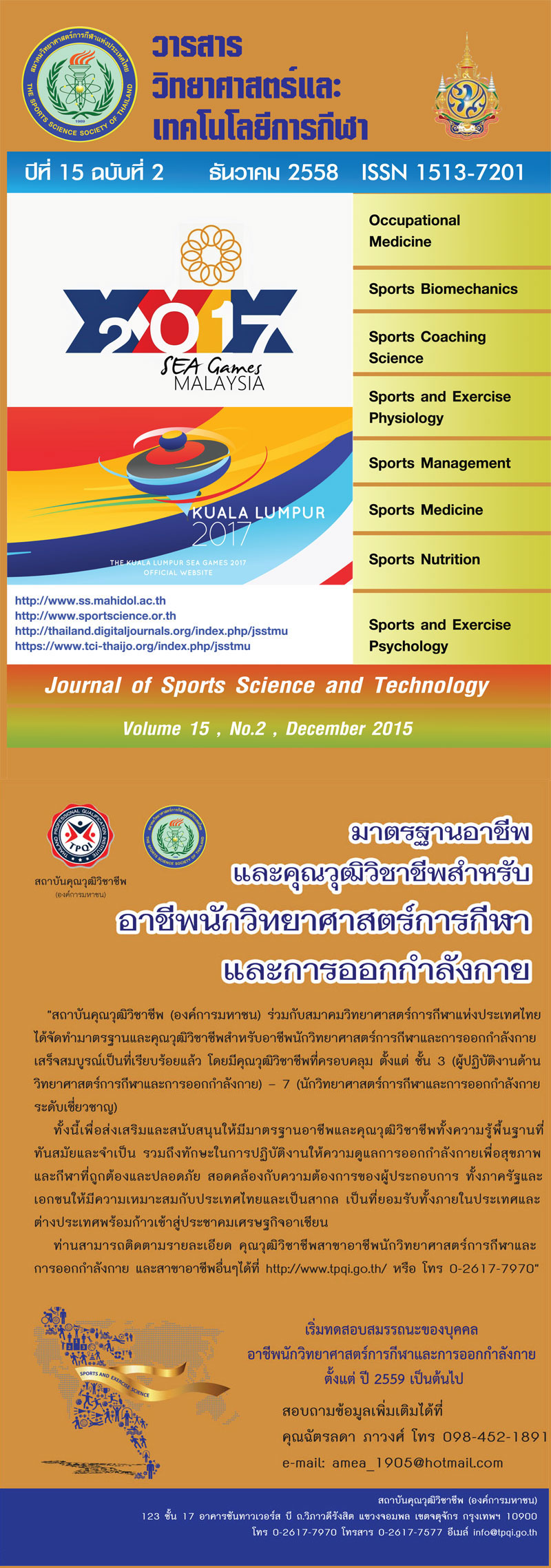COMPARISONS OF MOVEMENT IMAGERY BETWEEN ATHLETE AND NON-ATHLETE
Keywords:
movement imagery/ athlete and non-athleteAbstract
The purpose of this research was to compare the movement imagery between athlete and non-athlete. The sample size was 311 university students (208 male and 103 female), exercise and sport experiences between 5-17 years who had studied in 2013-2014 academic year Sample size completed in the Movement Imagery Questionnaire - 3t that included 3 components and 12 situations convenient sampling was chosen in this research. Data collection was completed and One-way Analysis of Variance was used.Results showed differences in movement imagery between athlete and non-athlete were not significantly different at all. The multivariate showed not significant at 0.05 (Pillai’s Trace = 0.005, Wilks’Lambda = 0.995, Hotelling’s Trace= 0.005, Roy’s Largest Root = 0.005, and F = 0.547). The data showed athletes and non-athletes had no difference in the effect of movement imagery ability. The comparisons of movement imagery were not significantly different among kinesthetic movement imagery, internal movement imagery, and external movement imagery. It is suggested the reason behind this was the athletes inability with movement imagery technique, Movement imagery is a mental technique which needs time to practice as well as physical training is a part of psychological skill training as a technique for making mental toughness. This technique needs support from coaches and extensions to others group to improve movement imagery ability. It would be beneficial if future research studies with other populations who are different in sport type, age, and culture; and use movement imagery technique for training amongst athletes and non-athlete.
(Journal of Sports Science and Technology 2015; 15(2); 319-329)
Downloads
Published
2015-12-28
How to Cite
1.
ONGSOMBOON T-, SINGNOY C-, SUKSAWANG P. COMPARISONS OF MOVEMENT IMAGERY BETWEEN ATHLETE AND NON-ATHLETE. J Sports Sci Technol [internet]. 2015 Dec. 28 [cited 2025 Dec. 12];15(2):319-2. available from: https://he01.tci-thaijo.org/index.php/JSST/article/view/44956
Issue
Section
Research Article






